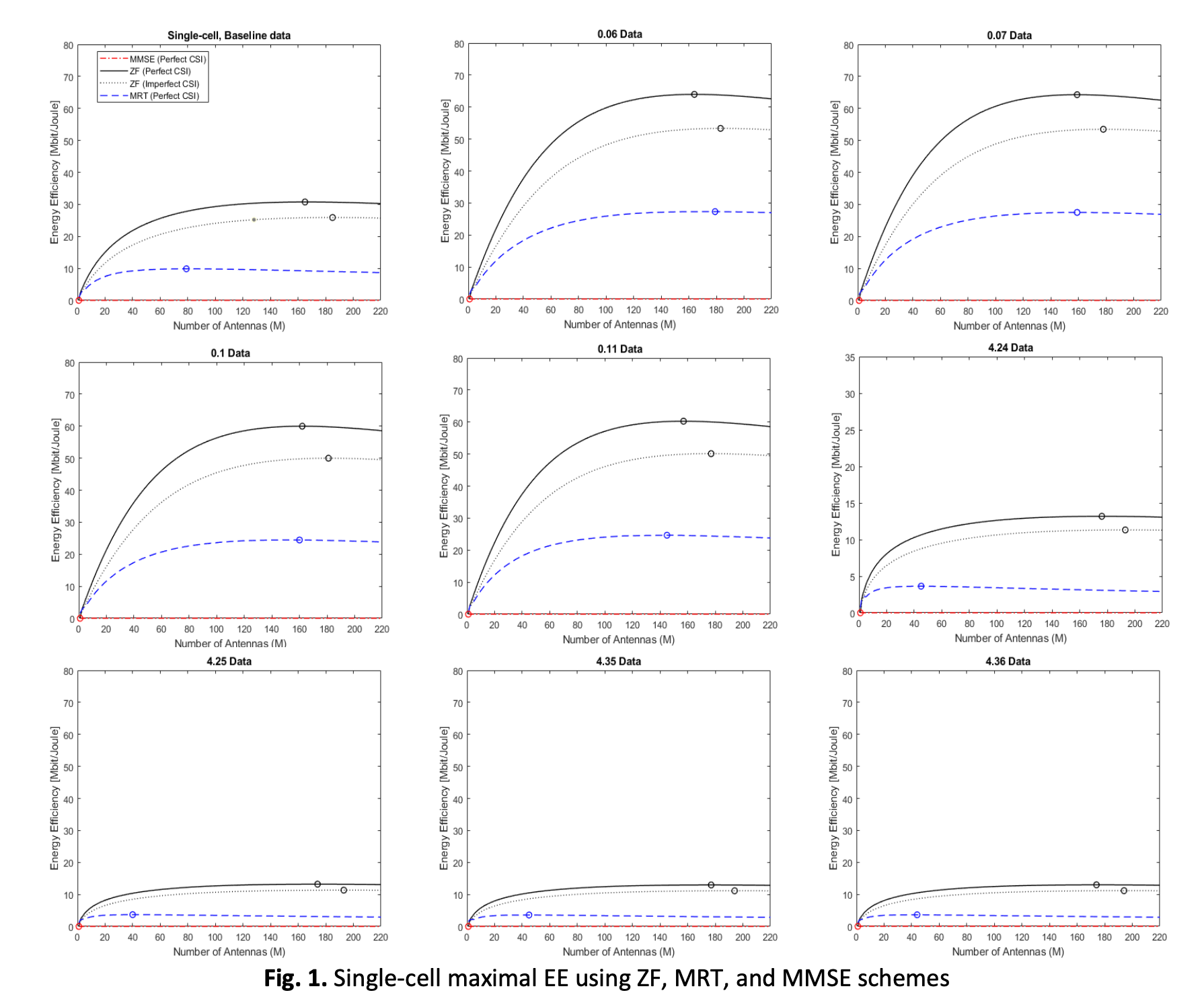Impact of Circuit Power on the Energy Efficiency of Massive Multiple-Input Multiple-Output (MIMO) Cellular Systems
DOI:
https://doi.org/10.37934/araset.32.2.164174Keywords:
Massive MIMO, circuit power, energy efficiency, green communicationAbstract
Massive multiple-input multiple-output (MIMO) systems are designed to increase data capacity systems. However, there are growing social and economic concerns in developing these communication technologies. Energy efficient systems are desirable for these systems considering the costs and minimizing resources. Thus, the optimization of these approaches is significant in the advancement of green communication. This paper converges on the circuit power in modelling massive MIMO systems. Specifically, to apply various power consumption of the transceiver chains, to determine the desired power of the base station value for maximum energy efficiency, and to define the effects of a realistic circuit power consumption model in Massive MIMO systems. Mathematical models were developed, and the corresponding codes were simulated using MATLAB. Different processing schemes were also studied, namely, maximum ratio transmission/maximum ratio combining, and zero forcing for the perfect and imperfect single-cells scenario. In contrast, multiple cells consider different re-use factors. As observed, a low power wattage consumption of transceiver chains and base stations is desired to produce a more remarkable relative change in energy efficiency. Local oscillators' power usage is also recommended to be low wattage. Low-power systems utilize low energy consumption but not disregarding higher energy efficiency. Other factors in data throughput – bandwidth, transmit power, noise power spectral density, and path loss, can be studied to optimize energy-efficient massive MIMO systems.
Downloads





























